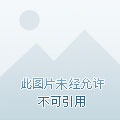Today, unlike in the past, the marriage handled by the parents has become a free love for the high pursuit of happiness, and the feudal feudalism of women's talentlessness has become a highly educated cultural person.
There seem to be countless reasons to help modern women resist the "marriage curse" of their families; at the same time, with the opening of the "three-child" policy, as long as one becomes a good one, I can have another one.
Dragging and dragging, many women have changed from the right age to the elderly pregnant women, but the elderly you may face more than one problem. Among them, the effect of eggs cannot be ignored.
How important is age for women of childbearing age?
Elderly women are usually referred to as women > 35 years of age.
After the age of 35, women's fertility begins to decline, and the decline is more pronounced after the age of 37.
With the increase of age, the rate of infertility and pregnancy success gradually decreases, even if pregnancy, miscarriage, preterm birth, hypertension, diabetes, placenta previa, stillbirth, fetal growth restriction and other maternal pregnancy complications, low birth weight infants, neonatal death, malformations and other adverse pregnancy outcomes will increase significantly.

Among them, the decline in follicle quality also plays an indispensable role in pushing.
Does advanced age affect follicles?
The process of decline in fertility with age in elderly women is mainly determined by the decrease in the number of follicles and the decline in egg quality.
1. Let's talk about the number of follicles first
During the fetal period, the number of oocytes in the ovaries can reach 6-7 million, and at birth due to the apoptosis of a large number of eggs, only 1 million-2 million, while only 300,000-400,000 follicles remain at menarche.
Don't look at it all in tens of thousands, only 400-500 follicles in a woman's lifetime can mature and ovulate.
How can I better appreciate this process? It's as if you had a city, and then you left a district, and for a while it became a courtyard, and finally the yard was left with a room, and then you found that the right to use the house had only one corner.
Its changes are unexpected. The original follicles of childbearing age decrease at a rate of 1,000 /month, and after the age of 35, the rate of follicle reduction is faster. By menopause, the number of remaining raw follicles is less than 1000.
2. Let's look at the quality of the follicles
The egg performs its mission through two meiosis, and the obstruction of mitochondrial energy supply in the cells of the elderly female can lead to abnormal meiosis, which in turn leads to an aneuploidy rate of the early embryo.
At the same time, advanced age affects gene expression and chromatin structure, with the increase of age, the quality of granulocytes around oocytes decreases, and the accumulation of external toxic factors will also cause damage to oocytes.
Therefore, the decline in ovarian quality has a greater probability of bringing about abnormal chromosomes, fetal cessation, miscarriage, and pregnancy complications.
The number of seeds for elderly women is small, the quality is poor, and the matter of conceiving, compared with women of the right age, can be said to be the Western Heavens, ninety-nine eighty-one difficult.
Ovarian quality declines, and how should fertility be assessed?
The evaluation of female fertility mainly includes the assessment of the ovaries, uterus and fallopian tubes, of which the ovaries are the mainstay. The main tests for ovarian assessment in fertility assessment are listed in the table below. With the progress of science and technology, there are more and more means and indicators to assess fertility, but there are still no intentional indicators that can comprehensively and accurately assess ovarian reserve capacity and reactivity, and even the outcome after pregnancy, and a variety of indicators need to be comprehensively considered to jointly evaluate fertility.
How can elderly pregnant women help?
Procrastination, always saying "not hugging, the time has not arrived", but the egg can not afford to wait. Mitochondrial functional status is closely related to ovarian aging. With the increase of age, the mitochondrial function in the follicle is impaired, can not provide enough energy for oocytes, and may appear mitochondrial variation of oocytes, abnormal meiosis of oocytes and abnormal chromosomal separation. Simply put, if the egg is not good, it is difficult to get pregnant!
Coenzyme Q10 is a fat-soluble antioxidant that plays a role in cellular energy metabolism primarily on the membrane of mitochondria. To a certain extent, the decline in ovarian function caused by advanced age can be improved by supplementing CoQ10, so as to protect ovarian reserve and increase fertility.